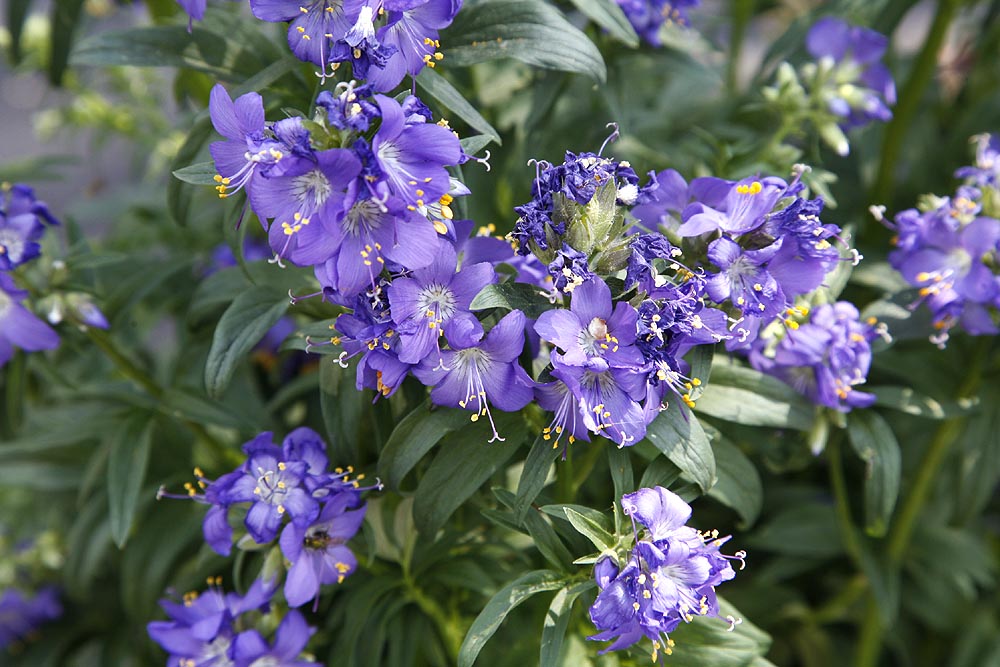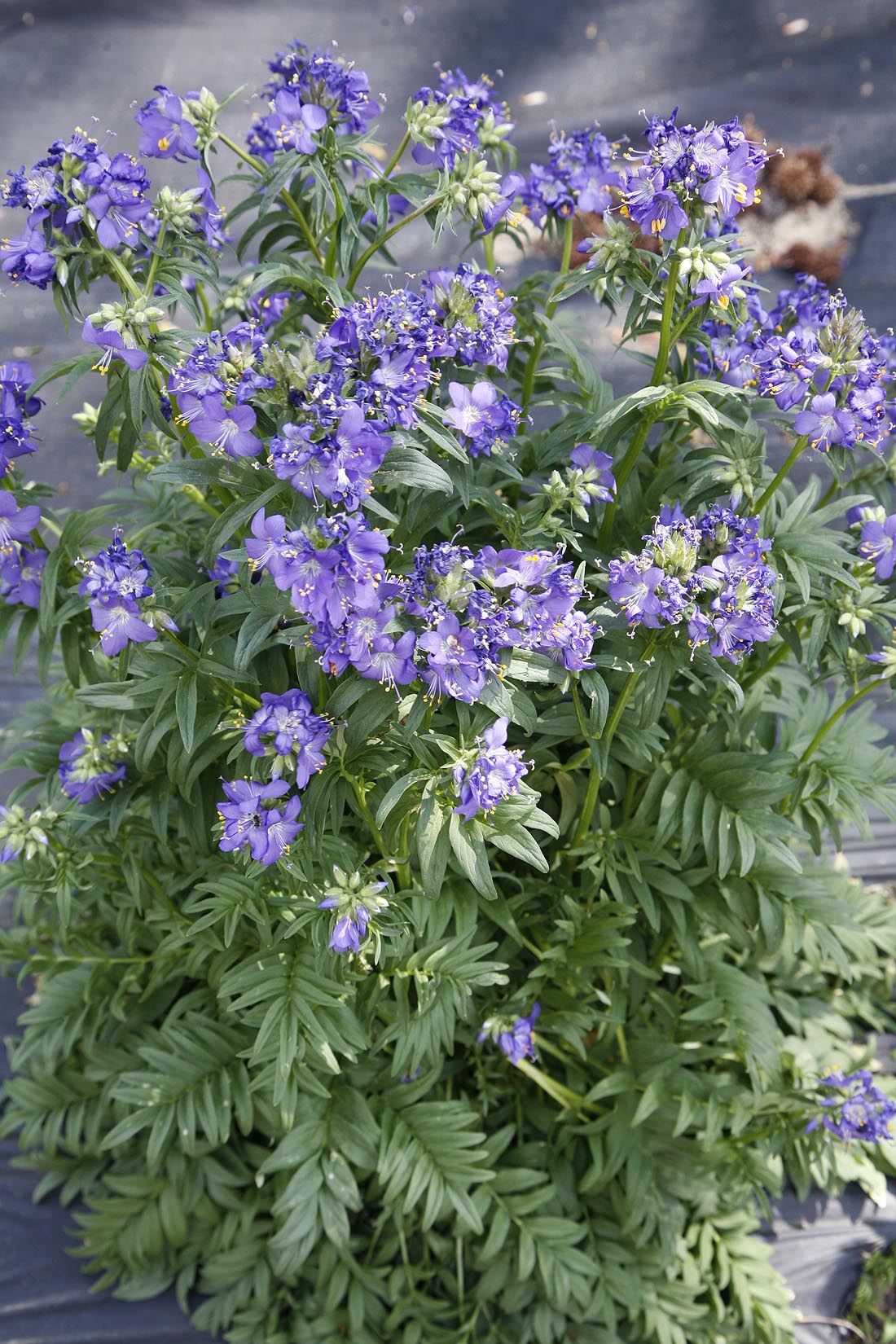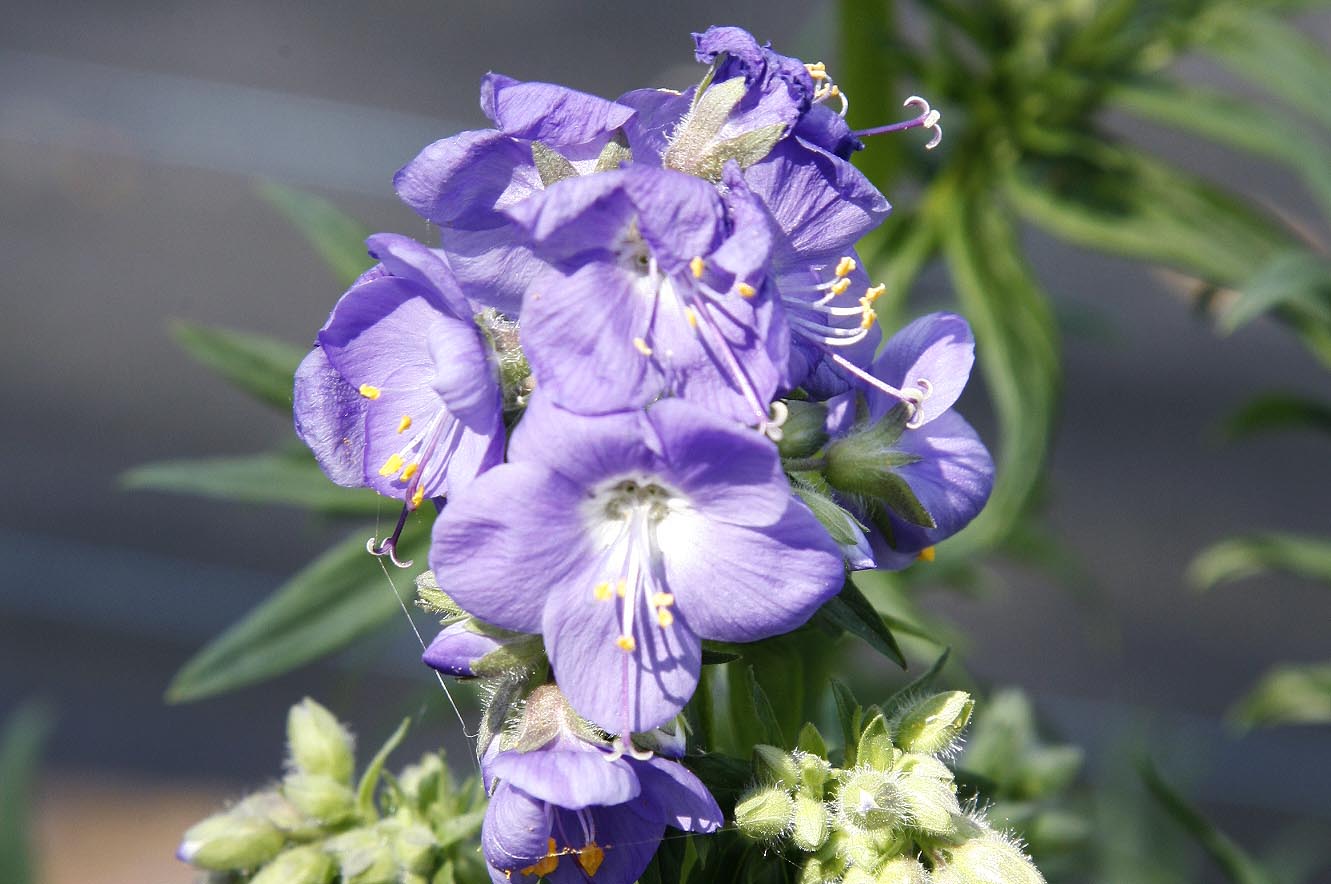A really lovely perennial plant for shady areas. Lush green foliage is produced in prolific mounds from which rise stalks of bright blue flowers that are a delight in any garden. Flowering late spring to early summer when little else is in flower they brighten any garden. Easy to grow and taking little care provided they have enough water, needs a richer damp soil for best results. Deer and rabbits don't eat it. However some report that cats like it, although we have not found that. A must for the shade garden.
Description
A lovely perennial that forms a mound of deep green ferny foliage. The leaves
are composite formed from many small leaflets that are spear shaped and arranged
in pairs on a central stem giving the appearance of a ladder. Leaves are prolific
especially in early spring. In mid spring the plant sends up tall stalks of
leaves 2-3 feet in height which are topped by masses of blue star shaped flowers
one inch across with long white stamens. Flowers for 3-6 weeks sometimes longer
then produces more leaves providing an exotic look during the summer months.
Hardy to zone 2 and will retain leaves throughout the winter in warmer zones.
Clumping nature makes it an excellent border plant. Many sources state that
this plant flowers in summer but here in zone 6 it always flowers in spring,
it appears to flower just after the daffodils have finished in the period where
little else is flowering.
Location and care
Location will depend on your growing zone. In zone 5-7 providing the plant with
some shade is necessary as it does not do well in full sunshine as it cannot
tolerate heat. Dappled shade or shade in the noon part of the day is ideal.
In zones higher than 5 full sun can be tolerated as the sunshine is not as strong
or bright and plants can tolerate these. Lower zones 8 and higher plant in shade.
This plant does not do as well in high heat and sunshine of southern states
and needs to be protected with shade in cooler spot, north sides of structures
or under trees where there is airflow is ideal. Does best in cooler climates
where it will flower more prolifically.
In less favorable conditions it may behave as a biennial and die after flowering.
If you have this problem give plants more shade.
Prefers a richer loam soil but can tolerate most soils provided it has enough
water. Soil should always be damp and not allowed to dry out, it does not however
like waterlogged soils.
Water regularly in hotter months does not like to have the soil dry out entirely
it should always be slightly damp. Adding mulch around the base of the plants
can help reduce water evaporation.
Cutting back flower heads after flowers will encourage more flowers often prolonging
flowering for several months.
Plants need to be moved to fresh soil every few years to prolong their lives.
Clumps need to be divided and moved which will encourage more vigorous growth.
Lush foliage makes an excellent border plant or for shady areas where lushness
is needed. Deer and rabbits don't eat it.
Growing
Best started indoors in trays or pots 6-8 weeks before last predicated frost
date. Sow thinly in good compost and keep moist. Light is needed for germination
so do not cover seeds, or cover with the thinnest coating possible. Germination
usually takes place within 14-20 days depending on conditions and temperature.
Cooler temps will inhibit germination. Keep moist until seedlings are large
enough to transplant to individual pots, then grow on until plants are large
enough to transplant. Harden off well before transplanting into permanent location.
Medical Uses
Polemonium was used in ancient times as a remedy for fevers, palpitations, headaches,
fevers, epilepsy and hysteria. Ancient Greek physicians prescribed Jacob's
Ladder in wine as relief from toothache, dysentery and insect bites. It was used in
the nineteenth-century to treat syphilis, rabies, headaches and neuralgia.
Other Uses
Boiled in olive oil the plant makes a black dye.
Other names.
Greek Valerian, Charity








